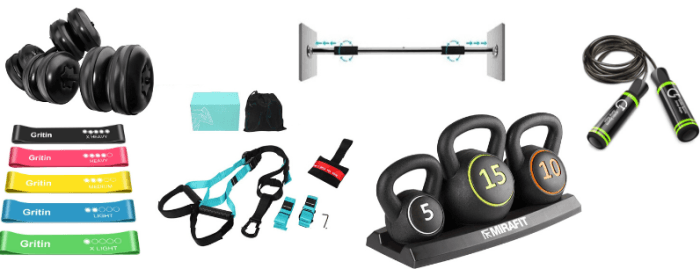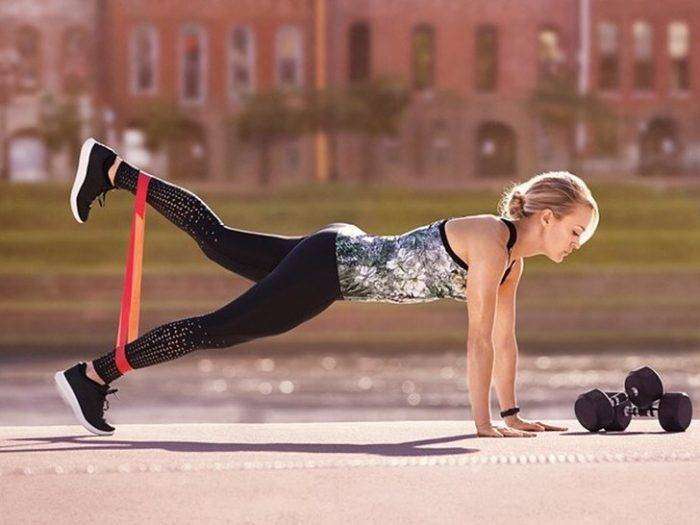Getting fit doesn’t have to be expensive. Many affordable fitness gadgets can help you reach your fitness goals. In this blog post, we will look through some of the cheap fitness gadgets on the market, as well as the most affordable fitness equipment a person can buy. We will also compare the cost of gym memberships to the cost of setting up a home gym.
What is the cheapest way to get fit?
The cheapest way to get fit is to exercise outdoors. There are many free or low-cost activities you can do, such as running, walking, biking, and swimming. You can also find free or low-cost fitness classes at many community centers and parks.
If you want to exercise at home, you can do so without any equipment. There are many bodyweight exercises you can do, such as push-ups, sit-ups, and squats. You can also find numerous free workout videos online.
10 Cheap fitness gadgets
If you want to purchase some fitness equipment, there are many affordable options available. Some of the cheapest fitness gadgets include:
1. Jump rope
A jump rope is a classic fitness tool that is incredibly affordable and effective. It is a great way to get your heart rate up, burn calories, and improve your coordination. You can find a basic jump rope for under $10.
2. Resistance bands
Resistance bands are another versatile and affordable fitness tool. They can be used to perform a variety of exercises, including squats, lunges, rows, and bicep curls. You can find a set of resistance bands for around $15.
3. Yoga mat
A yoga mat is vital for anyone who enjoys yoga or Pilates. It also provides a comfortable surface for other types of floor exercises, such as crunches and push-ups. You can find a basic yoga mat for under $20.
4. Fitness tracker
A fitness tracker can assist you in tracking your steps, distance traveled, calories burned, and active minutes. This information can help you stay motivated and reach your fitness goals. There are a variety of fitness trackers available at different price points, but you can find a basic tracker for under $30.
5. Smart scale
A smart scale is capable of monitoring various health metrics, like weight, body fat percentage, and other vital indicators. These metrics serve as valuable data points that empower you to monitor your long-term progress and modify your dietary and fitness regimen as necessary. A basic smart scale will be around $40.
6. Foam roller
A foam roller is great for self-massage and muscle recovery. It can help to reduce muscle soreness, improve flexibility, and increase range of motion. You can get a foam roller with under $50.
7. Weighted vest
A weighted vest can add extra resistance to your workouts, helping you burn more calories and build muscle faster. Weighted vests come in a variety of weights, so you can choose one that is appropriate for your fitness level. weighted vest can be around $60.
8. Pull-up bar
Using a pull-up bar is an effective method for developing strength and muscle in your upper body. It is also a relatively inexpensive piece of fitness equipment. With about $70, you can get a basic pull-up bar.
9. Medicine ball
A medicine ball is a versatile piece of fitness tool that can be used for exercises, including squats, lunges, twists, and throws. Medicine balls come in various weights, so you can choose one that is appropriate for your fitness level. Basic medicine ball are around $80.
10. Agility ladder
An agility ladder is an excellent tool for improving your speed, coordination, and footwork. It is also a lot of fun to use! You can find a basic agility ladder for under $90.

What is the cheapest fitness equipment a person can buy?
The cheapest fitness equipment a person can buy is a jump rope, which can be acquired for less than $10. Jump ropes offer an excellent means of elevating your heart rate, burning calories, and enhancing your coordination. Also, their portability ensures you can easily bring them along wherever you go.
Is a gym cheaper than a home gym?
Gym Membership:
- Membership Fees: Gyms typically charge monthly or yearly membership fees. The cost differs depending on the location, type of gym (e.g., budget, mid-range, high-end), and any special services or classes offered.
- Additional Costs: Some gyms may have initiation fees, annual maintenance fees, or locker rental charges.
- Commute: You need to factor in transportation costs, including fuel, public transport, or parking fees, if the gym is not within walking or cycling distance from your home.
- Time: The time spent commuting to and from the gym can be a hidden cost. It takes time out of your day that could be used for other activities.
- Other Expenses: You might end up spending on post-workout snacks, supplements, or personal trainers, depending on your needs and goals.
Home Gym:
- Equipment Costs: The initial expense of setting up a home gym can be significant. Costs vary depending on the equipment you choose, such as cardio machines, weights, resistance bands, and more.
- Space: You’ll need enough space in your home for your workout equipment. This could mean dedicating a room or part of a room to your fitness routine.
- Maintenance: Home gym equipment may require maintenance, repairs, or occasional replacements, which can add to the long-term cost.
- Upfront vs. Ongoing Costs: The key advantage of a home gym is that once the equipment is purchased, there are usually no recurring monthly fees. Over time, this can make a home gym more cost-effective.
- Convenience: Having a home gym can save you time and effort by eliminating the need to travel to a gym. You can work out at your convenience.
Which Is Cheaper?
The cost-effectiveness of a gym membership versus a home gym depends on your circumstances. If you’re dedicated to using your gym membership regularly and can make the most of its facilities and classes, it might be cost-effective. On the other hand, if you prefer the convenience of working out at home and have the discipline to do so, a home gym may be more financially prudent in the long run.
Consider your fitness goals, available space, budget, and your likelihood of consistently using the gym or home equipment. Some people find a balance by combining occasional gym visits with home workouts.
What can I use if I don’t have gym equipment?
Getting fit doesn’t have to require a gym membership or expensive equipment. There are many things you can use at home or outdoors to get a great workout.
Here are a few ideas:
- Your body weight: There are many bodyweight exercises that you can do with no equipment, such as push-ups, sit-ups, squats, lunges, and planks. You can also find many bodyweight workouts online and in fitness apps.
- Household items: Many everyday household items can be used for fitness exercises. For instance, you can utilize a chair for step-ups and tricep dips, a couch for push-ups and planks, and a gallon of milk for bicep curls and tricep extensions.
- Outdoor resources: If you have access to a park or other outdoor space, you can take advantage of the natural environment for your exercise. For example, you can run, bike, or hike on trails or do hill sprints and bodyweight exercises on the grass.
Additional tips for getting fit on a budget
- Look for deals on fitness equipment: Many sporting goods stores and online retailers offer sales on fitness equipment throughout the year. You can also find used fitness equipment for sale online and at garage sales.
- Work out with a buddy: Working out with someone can help you stay motivated and accountable. It can also make exercise more fun.
Conclusion
Getting fit doesn’t have to drain your bank account. Affordable fitness gadgets and equipment are readily available, and they can be just as effective as their more expensive counterparts. Whether you prefer bodyweight exercises, affordable gear, or a combination of both, remember that consistency and commitment are the true secrets to achieving your fitness goals.

